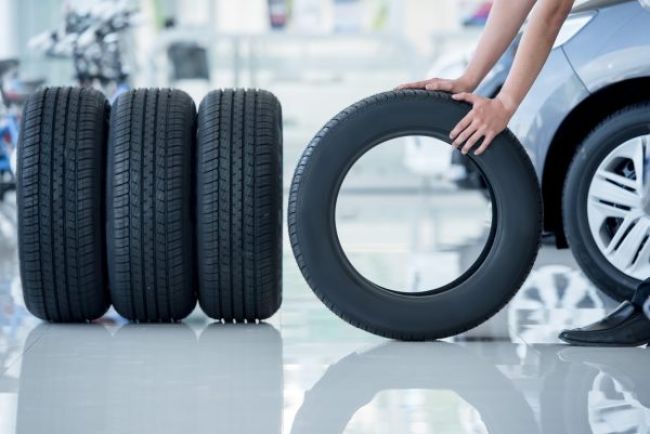
Tire Procurement Strategies for Utility Fleets
Con Edison, headquartered in New York, operates a fleet of approximately 8,100 active assets ranging from light- to heavy-duty vehicles, including digger derricks, flush trucks, bucket trucks, tankers, tow trucks, buses and trailers.
The utility’s tire procurement decisions are made by an internal tire committee, whose members include engineers from the transportation department as well as garage supervisors and purchasing department employees. The group meets periodically to discuss tire issues and any new updates.
Con Edison engages in various purchasing strategies, such as bulk buying, establishing long-term contracts and forging partnerships with tire manufacturers.
According to Peter Matsis, a senior specialist in transportation, work management, for the utility, tires are ordered as needed to keep inventory quantities comfortable in the company’s 14 active garages. Excluding blowouts, Con Edison follows manufacturer-expected mileage and meets New York State inspection requirements. The company typically purchases about 600 tires a year.
The Best Starting Point
The best starting point for optimal tire procurement is to review what is currently being done, the frequency of tire purchases and replacements, and what the annual spend is, Matsis said.
“Be consistent with tire sizing for vehicle types to allow for smaller tire inventory in the shops,” he said.
Garrison Jelley, account executive, government and metro, for Michelin North America Inc., agreed with Matsis’ guidance. He also recommended creating a list of fleet vehicles and tire sizes, as well as having a designated fleet manager/tire technician on staff.
Con Edison has been buying tires in bulk for over 15 years. Long-term contracts usually last three years.
“Bulk buying allows us to get better pricing, achieve competitive pricing and to apply across [Con Edison and Orange & Rockland Utilities],” explained Larry Jacobsen, who works for the utility as a senior specialist in transportation, IT systems and parts. “Long-term contracts are always helpful with continuity with vendor relationships, and competitive pricing and service.”
Selecting the Right Tires
Utility truck tires are made for specific needs, such as certain applications, traction, wear life and fuel efficiency.
When spec’ing tires, a utility fleet should consider all their needs in terms of how the tires will be used. For a fleet that is fuel conscious, rolling resistance is one of those considerations, Jelley said.
“Start with the type of driving your fleet does, then pick the low rolling resistance version of that tire,” he said. “These often have a special designation within their names. Michelin, for example, designates these product lines with the word ‘energy.’ These tires have been specifically designed to break the compromises that can come with just using low rolling resistance rubber compounds – traction and wear.”
Based on research, testing and personal experience, Jacobsen suggested looking for a high tread wear rating number on the tires being purchased. “This helps with the life and number of miles on the tire.”
Product claims and reviews can be other helpful tools when looking for fuel-efficient products.
Partnering with Manufacturers
A fleet can also consult their tire dealer or manufacturer for assistance in choosing the right tires, Jelley said. It is common for fleets to seek guidance from manufacturers and dealers that can offer expert advice and suggestions.
Con Edison has had positive experiences partnering with tire manufacturers.
“It’s always helpful with continuity, pricing and service, and mutual aid support. Better service, better pricing,” Jacobsen said.
According to Jelley, “The advantages of working with a tire manufacturer allow fleets to stay up to date with the latest versions of tires, as well as work with the tire designers for specific needs. Our engineers and dealers work closely with fleet managers to find alternative solutions if a certain tread or tire does not suit their current job.”
After a fleet is partnered with a local tire dealer, Jelley said they should be able to access a rolling stock of the most common tires and sizes they use. This will allow for faster deliveries by the dealer to the fleet.
According to Con Edison, the typical time frame from order to delivery could be the same day or up to a week, depending on the tire. Matsis noted that limited supply availability is one disadvantage fleets may face if they work with just one vendor.
Jelley echoed that statement. “Supply chain has an impact on all elements, from the raw materials to movement of semi-finished product, all the way to the final delivery to the end user. This is across the industry. These delays impact the ability to be efficient in maximizing plan production and meeting the needs of customers,” he said.
About the Author: Grace Suizo has been covering the automotive fleet industry since 2007. She spent six years as an editor for five fleet publications and has written more than 100 articles geared toward both commercial and public sector fleets.
- How to Best Interview Fleet Personnel
- How to Best Deliver In-House Technician Training
- Tire Procurement Strategies for Utility Fleets
- The Utility Expo Returns to Louisville
- The Impact of AI and Machine Learning on Telematics
- What’s New in Aerial Lift Equipment in 2023?
- Be Prepared for the ‘Big One’
- Reflection and Respect
- Using Power Tools in the Bucket
- How to Spec All-Terrain Tracked Carriers for Aerials and Derricks

